Cloggin' the Pipes
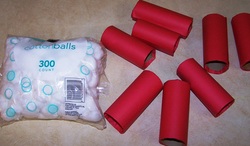
I've used this activity for first through fifth grades- and the kids LOVE it! It really illustrates the connection between poor health choices and the buildup of "junk" (plaque) in the arteries. I usually do a re-cap of what foods are considered healthy and which are "sometimes" foods before I hand out their blood vessels. Even older kids benefit from this reminder.
Objectives: Students will identify that food choices affect our blood vessels.
Supplies Needed: Empty paper towel or toilet tissue rolls, red paper, cotton balls.
Prep work: Cut paper towel rolls into 3" segments. Cover these rolls or toilet tissue rolls with red paper (double-sided tape works well)
Procedure: Place a pile of cotton balls in the center of each table and give each student a "blood vessel". Remind them what blood flows through these blood vessels all over their body. For older students, explain the difference between arteries and veins. The cotton balls represent the plaque that builds up on the inside of our blood vessels from junk food. This plaque is made of the fat and cholesterol in the "sometimes" foods discussed earlier.
Follow the basic story below, feel free to elaborate on certain situations that will resonate with your class!
Objectives: Students will identify that food choices affect our blood vessels.
Supplies Needed: Empty paper towel or toilet tissue rolls, red paper, cotton balls.
Prep work: Cut paper towel rolls into 3" segments. Cover these rolls or toilet tissue rolls with red paper (double-sided tape works well)
Procedure: Place a pile of cotton balls in the center of each table and give each student a "blood vessel". Remind them what blood flows through these blood vessels all over their body. For older students, explain the difference between arteries and veins. The cotton balls represent the plaque that builds up on the inside of our blood vessels from junk food. This plaque is made of the fat and cholesterol in the "sometimes" foods discussed earlier.
Follow the basic story below, feel free to elaborate on certain situations that will resonate with your class!
Age: Infant
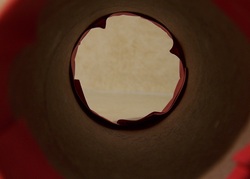
Everyone hold their blood vessels up to the light. Nice and clean, right? This blood vessel belongs to a baby. Babies have healthy blood vessels that are stretchy and allow the blood to flow through freely.
Age: Teenager
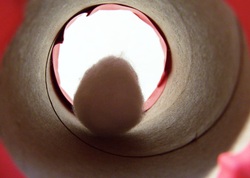
Now the baby has grown up into a teenager, maybe 17 or 18 years old. Teenagers are notorious for making unhealthy decisions. This teenager comes home from school every day, parks himself (or herself) on the couch with a big bag of chips, and watches TV or plays video games until it's time for dinner. He rarely goes outside to play with his friends or ride bikes. Are these healthy decisions? The cotton ball represents the junk or plaque that sticks to the inside of your blood vessels when you eat unhealthy foods. Put one cotton ball in your blood vessel because this teenager isn't making healthy decisions. Now, hold it up to the light and look through. Can the blood still flow though? Yes. There's a little bit of plaque on the inside, but the blood can still go around it.
Age: 30-something
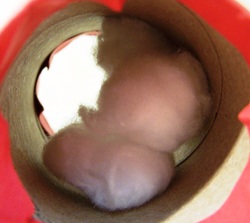
The teenager has graduated and is no longer in school, now he has a job. On the way home from work every day, he goes through the drive-thru at a fast-food restaurant and orders a cheeseburger with french fries. He still loves to sit on the couch and watch movies or work on the computer, rarely goes outside for walks or to work in the yard. Are these healthy decisions? Put two more cotton balls in your blood vessel and hold it up to the light. How's it looking now?
Age: 60's
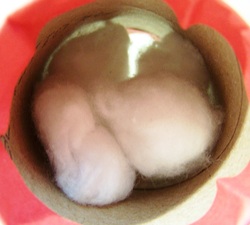
Now he is retired (if he's lucky!) but he has the same overall lifestyle that he had when he was a teenager. He still eats a lot of fast food, is very inactive, and loves to order pizza and eat icecream several nights of the week. Healthy decisions? No! Add two more cotton balls and hold up to the light.....what's happening?
Most of you have blood vessels that only have a tiny amount of blood passing through. The heart is working hard to pump it through but it's not having much luck. If this man continues this same unhealthy lifestyle, what will probably happen to him? (You'll get lots of answers here, guide them towards "heart attack", not necessarily dying. Once they figure out what a heart attack means, they'll have lots of questions and stories).
Most of you have blood vessels that only have a tiny amount of blood passing through. The heart is working hard to pump it through but it's not having much luck. If this man continues this same unhealthy lifestyle, what will probably happen to him? (You'll get lots of answers here, guide them towards "heart attack", not necessarily dying. Once they figure out what a heart attack means, they'll have lots of questions and stories).
You, Now
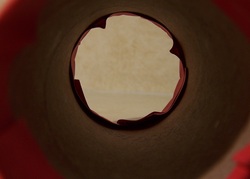
Everyone empty out their cotton balls. Now, hold your blood vessel up to the light (you'll hear lots of ooohs and ahhhs). Good news: this is what YOUR blood vessels look like RIGHT NOW. Do you want to keep this way? (Yes!) What are two ways to keep your heart and blood vessels healthy? (Eating healthy foods and exercise) Eating healthy foods will reduce the amount of plaque you put into your body, and exercising will help clean it away. When you exercise, your body makes little helpers (HDL- the "good" cholesterol) that clean away the built-up plaque.
Source: Adapted from Heart & Stroke: Heart Smart Kids (Grade 1 curriculum)
Source: Adapted from Heart & Stroke: Heart Smart Kids (Grade 1 curriculum)
